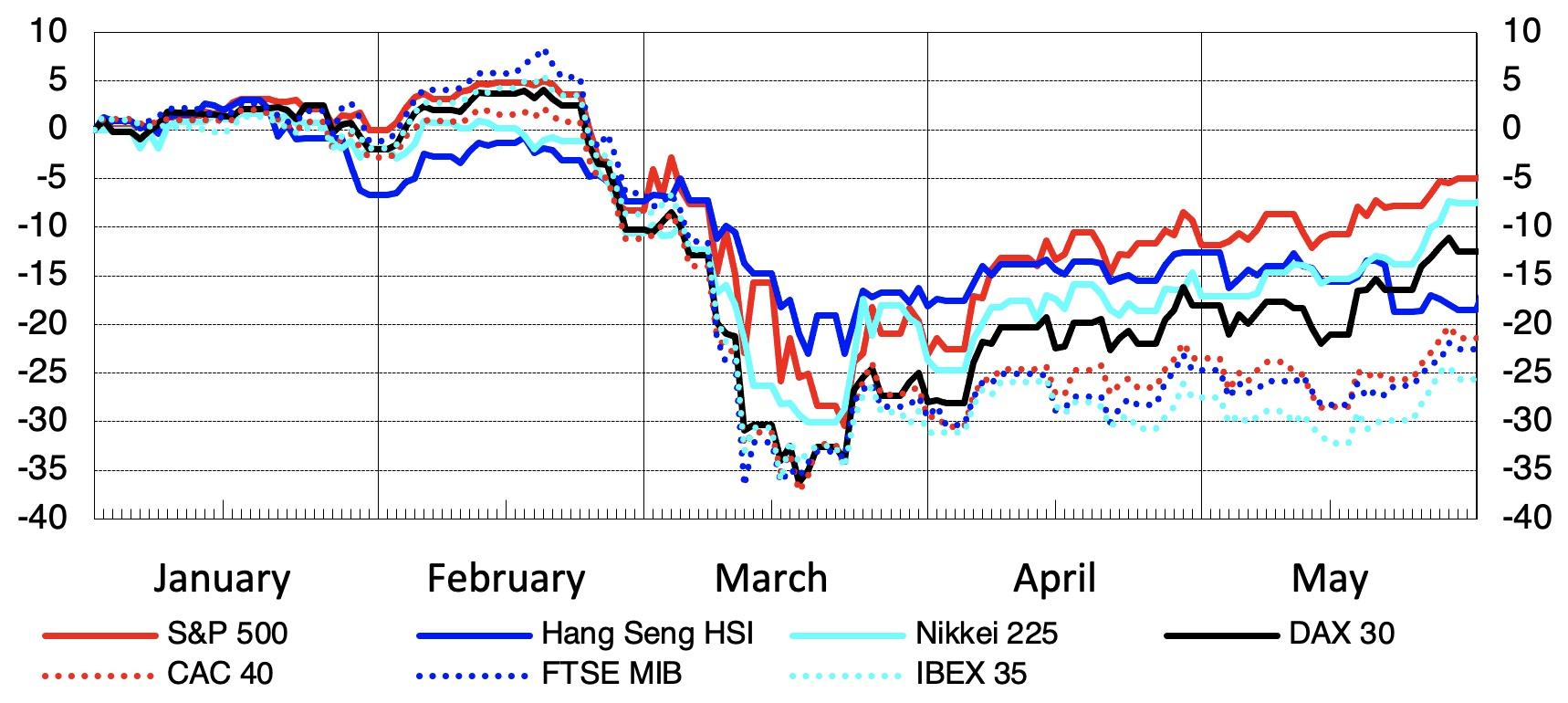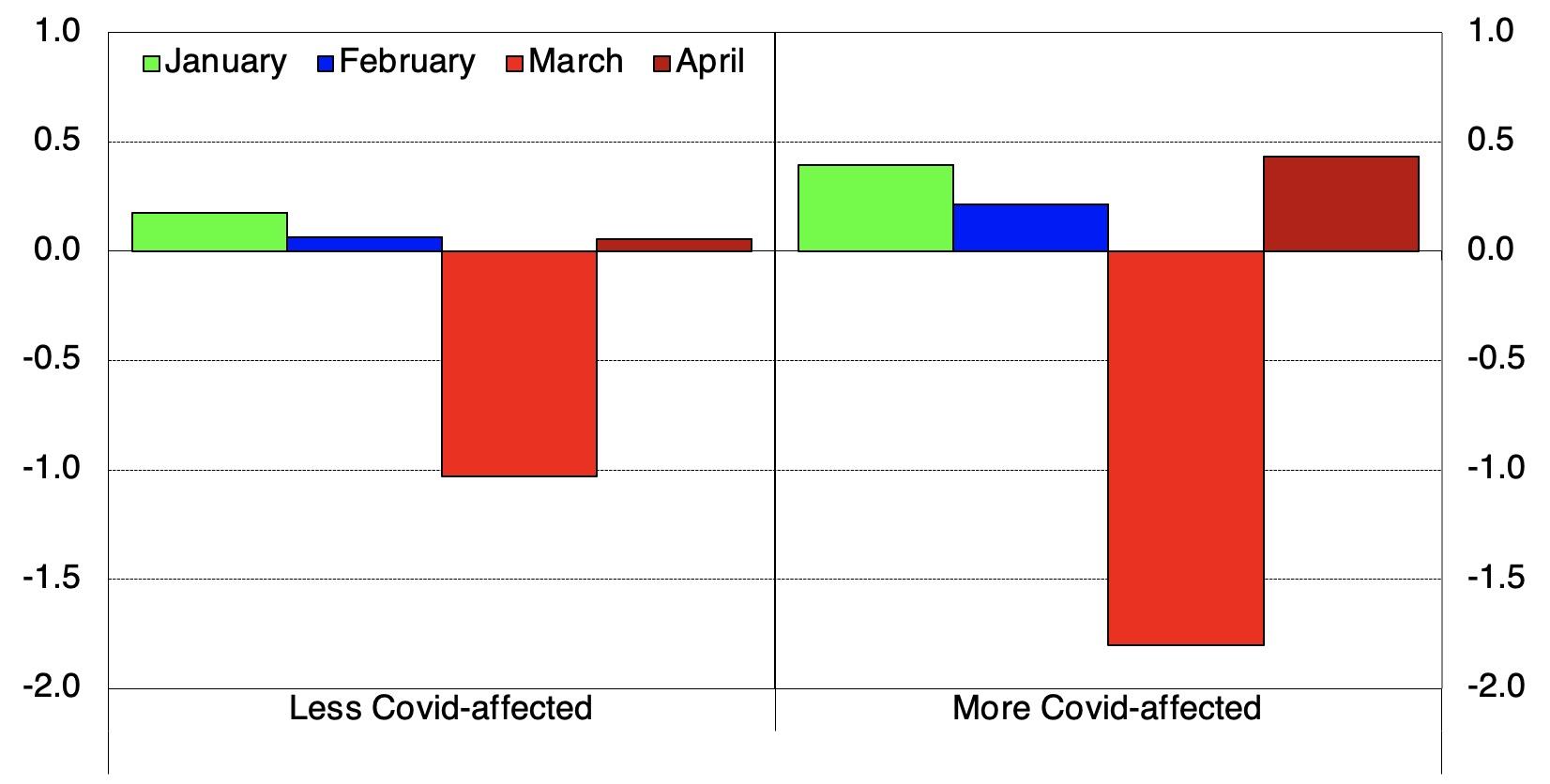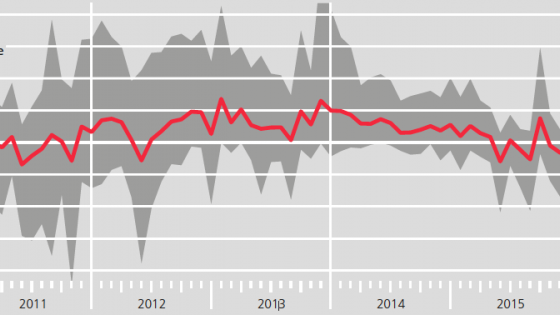The debate over mutual funds has focused increasingly on their intrinsic fragility and the possible implications of their conduct for financial stability, especially as they often invest in illiquid assets while guaranteeing their investors high levels of liquidity (e.g. Chen et al. 2010, Goldstein et al. 2017). Mutual funds account for a large fraction of world savings, purchase and sell securities all over the globe, and play a crucial role in the financing of governments and firms. They have grown substantially since the Global Crisis, partly as a result of the increased regulation of banks.
In a recent paper (Affinito and Santioni 2021), we exploit the exogenous shock of the Covid-19 outbreak to perform a comprehensive empirical analysis of mutual fund portfolio decisions. The Covid-19 crisis provides a valuable opportunity to gain insights into drivers of mutual fund behaviour and strategies, as their portfolio choices may be tested by exploiting the impact of a major – and truly exogenous – worldwide shock. Specifically, we exploit the circumstance that the emergency outbreak and subsequent policy measures varied substantially across countries and industries, both in the intensity and timing. In early 2020, during the crash, stock prices declined by close to 30% on average, but asset performance varied significantly across countries and industries (Figure 1).
Figure 1 Stock market returns during Covid-19 pandemic
Note: The figure plots the cumulative stock market returns since the spread of Covid-19 for each of the selected economies.
Source: Morningstar Direct.
We take advantage of a unique, granular and worldwide dataset, which contains more than 12 million observations on fund-by-fund and security-by-security sales and purchases during the first four months of 2020. Our dataset covers over 20,000 mutual funds (about 40% of the global industry in terms of total net assets), located in over 40 national jurisdictions, and investing in more than 100 economies and 20 sectors. We believe ours is the first paper to assess mutual funds’ portfolio reactions to Covid-19 as a function of the spreading news on the pandemic, and to comprehensively depict their decisions when the shock arrived and panic broke out.
In our econometric analysis, the impact of Covid-19 at the country level is measured by two alternative indexes: the ratio of either the total number of confirmed cases or the total number of deaths to the total population. As is well known, these two ratios are imperfect measures of the real spread of the contagion and the extent of the health emergency. But they are perfectly suited to our purposes because they reflect the perception of international investors and the knowledge that they had on the impact of Covid-19 across countries and over time. Instead, the impact of Covid-19 across industries is computed through the indexes recently introduced in labour economics (e.g. Koren and Petö 2020), intended to measure in each sector the extent to which firms’ operations are compatible with social distancing and lockdowns. To verify whether other intrinsic characteristics of financial assets (other than those linked to the Covid-19 impact) affect our results, we match our security-by-security data with information on the characteristics of each financial asset (rating scores, pressure, return) and of each firm (size, profitability, leverage) issuing all over the world the assets held by mutual funds.
Our estimates first show that the pandemic triggered portfolio re-composition by the global mutual fund industry. Consistent with the debate on their vulnerability, we document that when the panic broke out, mutual funds did not sell horizontally, but instead divested from financial assets considered most in trouble at that moment – that is, those issued in countries and by industries more affected by Covid-19 (Figure 2) – irrespective of other inherent characteristics of the assets. This confirms the view that mutual funds, especially during crises, can push asset prices away from fundamentals. Our paper complements the rapidly growing body of work on stock market reactions to the onset of Covid-19 (e.g. Ramelli and Wagner 2020, Albuquerque et al. 2020). Other studies typically find that pandemic-resilient assets suffered less during the outbreak. We show that mutual funds prioritised exactly the pandemic-resilience of assets.
We also find that mutual funds with more outflows from unit-holders exacerbated the sales of more Covid-affected assets (Figure 3). This indicates that fund managers’ portfolio adjustments worked in the same direction as investor outflows, rather than mitigating the outflow effect (e.g. Cella et al. 2013). These results corroborate the concern that the open-end nature of these investment vehicles leads to run-like risk, making fire sales and price volatility more likely (e.g. Stein 2009, Manconi et al. 2012, Financial Stability Board 2017).
Figure 2 Mutual fund net purchases of financial assets issued in countries more and less affected by Covid-19 (% of total new assets)
Note: Countries less (more) affected by Covid-19 (more Covid-affected) are those below (above) the 75th percentile of our measure of Covid-19 exposure across countries.
Source: Morningstar Direct.
Figure 3 Mutual fund net purchases of financial assets issued in countries more and less affected by Covid-19, by fund outflows (% of total new assets)
Note: Countries less (more) affected by Covid-19 (more Covid-affected) are those below (above) the 75th percentile of our measure of Covid-19 exposure across countries.
Source: Morningstar Direct.
But when we examine the portfolio rebalancing , we find several dimensions of heterogeneity in the mutual fund industry. We find heterogeneous results according to fund investment policies, performance abilities, and types of assets held. Mutual funds turn out to include heterogeneous institutions, which use a variety of portfolio strategies that at least partially offset each other. Notably, we find that mutual funds with higher pre-pandemic returns did not follow the herd at the emergency outbreak, suggesting some well managed funds stood apart even in the panic phases. These results suggest that financial stability policies should be adapted across mutual fund categories, reflecting the varying risk appetites embedded in their different investment policies and performance strategies, as well as the different vulnerability of the assets they hold.
We also show that when the shock arrived and the panic broke out, the bulk of the adjustment in mutual funds’ portfolios occurred abruptly and severely during the ‘fever’ of the Covid-19 crisis (that is, in March 2020). We find signs of resurgence already by April 2020, following the exceptional policy measures taken worldwide by public authorities in those weeks (Figures 2 and 3). We find that the rebound in April mainly concerned mutual fund purchases of corporate bonds, which were largely the financial asset targeted by central banks’ programmes in the period. This result corroborates the existence of a channel of unconventional monetary policy acting through non-bank financial institutions. This may enrich the policy toolkit of monetary authorities and the instruments to stabilise financial markets and mutual funds themselves (e.g. Falato et al. 2020, Gilchrist et al. 2020, Pastor and Vorsatz 2021).
Our paper relates to some of the major strands of previous research on mutual funds. First, our results on the massive sales of Covid-affected assets – those perceived as more in distress in the period – contribute to arguments about mutual funds’ intrinsic fragility. In time of crisis, mutual funds sell the most troubled assets and contribute to fire sales. Second, our results on higher sales of more Covid-affected securities from funds with more outflows contribute to studies on the relationship between the sales of institutional investors and those of their unit-holders, corroborating the view that mutual funds may increase market volatility during times of turmoil because they face the risk of having to respond to massive (often retail) redemptions. Third, our results on the several dimensions of mutual fund heterogeneity offer a more nuanced view of mutual funds, which include heterogeneous institutions and are therefore neither all smart negative-feedback investors (who only sell overpriced stocks) nor all destabiliser investors (who herd and chase trends). Fourth, our results on a non-bank financial institution channel of unconventional monetary policies contribute to a recent and relevant stream of analysis.
References
Affinito, M and R Santioni (2021), “When the panic broke out: COVID-19 and investment funds' portfolio rebalancing around the world”, Temi di discussione (Economic working papers), Bank of Italy, Economic Research and International Relations Area.
Albuquerque, R, Y Koskinen, S Yang and C Zhang (2020), “Resiliency of Environmental and Social Stocks: An Analysis of the Exogenous Covid-19 Market Crash”, The Review of Corporate Finance Studies.
Cella, C, A Ellul and M Giannetti (2013), “Investors’ Horizons and the Amplification of Market Shocks”, The Review of Financial Studies 26: 1607-1648.
Chen, Q, I Goldstein and W Jiang (2010), “Payoff complementarities and financial fragility: Evidence from mutual fund outflows”, Journal of Financial Economics 97: 239-262.
Koren, M and R Petö (2020), “Business disruptions from social distancing”, Covid Economics 2.
Falato, A, I Goldstein and A Hortaçsu (2020), “Financial Fragility in the Covid-19 Crisis: The Case of Investment Funds in Corporate Bond Markets”, NBER Working Papers 27559.
Financial Stability Board (2017), “Policy Recommendations to Address Structural Vulnerabilities from Asset Management Activities”, Financial Stability Board.
Gilchrist, S, B Wei, V Yue and E Zakrajsek (2020), “The Fed Takes on Corporate Credit Risk: An Analysis of the Efficacy of the SMCCF”, CEPR Discussion Paper 15258.
Goldstein, I, H Jiang and D T Ng (2017), “Investor flows and fragility in corporate bond funds”, Journal of Financial Economics 126: 592-613.
Manconi, A, M Massa and A Yasuda (2012), “The role of institutional investors in propagating the crisis of 2007–2008”, Journal of Financial Economics 104: 491-518.
Pastor, L and M B Vorsatz (2020), “Mutual Fund Performance and Flows during the Covid-19 Crisis”, Review of Asset Pricing Studies 10: 791-833.
Ramelli, S and A F Wagner (2020), “Feverish Stock Price Reactions to Covid-19”, The Review of Corporate Finance Studies.
Stein, J C (2009), “Sophisticated Investors and Market Efficiency”, Journal of Finance LXIV: 1517-1548






